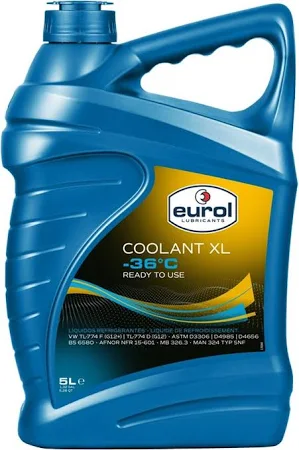As the winter season approaches, it’s important to ensure that your vehicle is ready for the colder temperatures and harsh driving conditions. While many people focus on swapping out their tires and checking the battery, one of the most overlooked aspects of winter car care is coolant maintenance. Coolant, also known as antifreeze, plays a coolant maintenance for winter crucial role in keeping your engine operating at the right temperature. Proper coolant maintenance can help prevent freezing, overheating, and other issues that could lead to expensive repairs or a breakdown during the winter months.

The Role of Coolant in Winter
Coolant is a mixture of antifreeze and water that circulates through your engine to regulate its temperature. It helps prevent the engine from freezing in cold temperatures and ensures that the engine does not overheat, even when the weather is cold. Here’s why coolant is so important during the winter:
- Prevents Freezing: Coolant is designed to lower the freezing point of the water in your engine’s cooling system. If the coolant freezes, it could cause significant damage, including cracking the engine block or damaging the radiator. In subzero temperatures, having the proper coolant mix is critical to avoid this risk.
- Maintains Engine Temperature: While freezing temperatures are a concern, engines still produce heat even in cold weather. If the coolant isn’t functioning properly, your engine may overheat, leading to engine damage. Coolant helps maintain the ideal operating temperature of the engine, keeping it running smoothly.
Ensuring that your coolant system is properly maintained is vital to the overall performance of your vehicle during the colder months.
How to Prepare Your Coolant for Winter
- Check Coolant Levels: Before the winter chill sets in, check the coolant levels in your vehicle. Most cars have a transparent coolant reservoir that shows the fluid level. Be sure to check it when the engine is cold, as this will provide an accurate reading. If the level is low, top it up with the appropriate coolant mixture. If you’re unsure about the right type of coolant, refer to your vehicle’s owner’s manual.
- Inspect the Condition of the Coolant: Over time, coolant can degrade and become contaminated. When coolant is old or contaminated, it may turn a rusty color or become cloudy. If you notice that your coolant looks dirty or discolored, it’s time for a flush. Flushing the coolant system involves draining the old fluid and replacing it with fresh coolant to ensure optimal performance.
- Ensure the Right Coolant Mixture: The ideal antifreeze mixture is typically a 50/50 blend of antifreeze and distilled water. This mixture provides adequate protection against freezing while also helping the engine maintain the right temperature during operation. However, depending on your vehicle and climate, you may need to adjust the ratio. It’s important to follow the manufacturer’s recommendations for the correct coolant mixture.
- Test the Freezing Point: To ensure your coolant is prepared for the coldest temperatures, it’s a good idea to test its freezing point. This can be done using an antifreeze tester, a small tool that measures the freezing point of your coolant. The ideal freezing point should be well below the temperatures you’ll experience in your area. Most coolants are designed to withstand freezing down to -34°F (-37°C), but it’s always worth double-checking.
- Look for Leaks: Leaking coolant can cause your engine to overheat or fail to regulate its temperature properly. Inspect the radiator, hoses, and clamps for any signs of leaks. You might notice a puddle of coolant under your vehicle or see coolant stains on engine components. If you find a leak, it’s important to have it repaired promptly to avoid further damage to the engine.
- Flush the Radiator System: It’s a good idea to flush your radiator system every couple of years, especially before winter. Over time, rust, dirt, and other debris can accumulate in the radiator, reducing its efficiency. Flushing the radiator helps remove these contaminants and ensures that the new coolant flows freely through the system. Follow your vehicle’s maintenance schedule for flushing and replacing the coolant.
Other Winter Cooling System Tips
- Check the Radiator Cap: The radiator cap maintains the pressure in the cooling system and prevents coolant from boiling over. A damaged or worn-out radiator cap can lead to overheating or coolant loss. Be sure the cap is secure and in good condition before winter.
- Monitor Heater Performance: Since the heater relies on coolant to generate warm air for the cabin, it’s important to make sure your vehicle’s heater is functioning properly. If the heater is blowing cold air, it could be a sign that the coolant level is low or the system is blocked.
- Keep an Eye on the Temperature Gauge: Even in winter, your engine can overheat if there are issues with the coolant system. Keep an eye on the temperature gauge while driving, and if it rises above the normal range, pull over and allow the engine to cool down.
Conclusion
Coolant maintenance is a key part of preparing your vehicle for winter. By checking the coolant levels, inspecting the condition of the coolant, ensuring the right mixture, and addressing any potential leaks, you can help your engine perform optimally during the colder months. Regular maintenance will not only protect your vehicle from freezing and overheating but also extend the life of your engine. With a well-maintained coolant system, you’ll be able to enjoy a smoother, safer, and more reliable driving experience throughout the winter season.